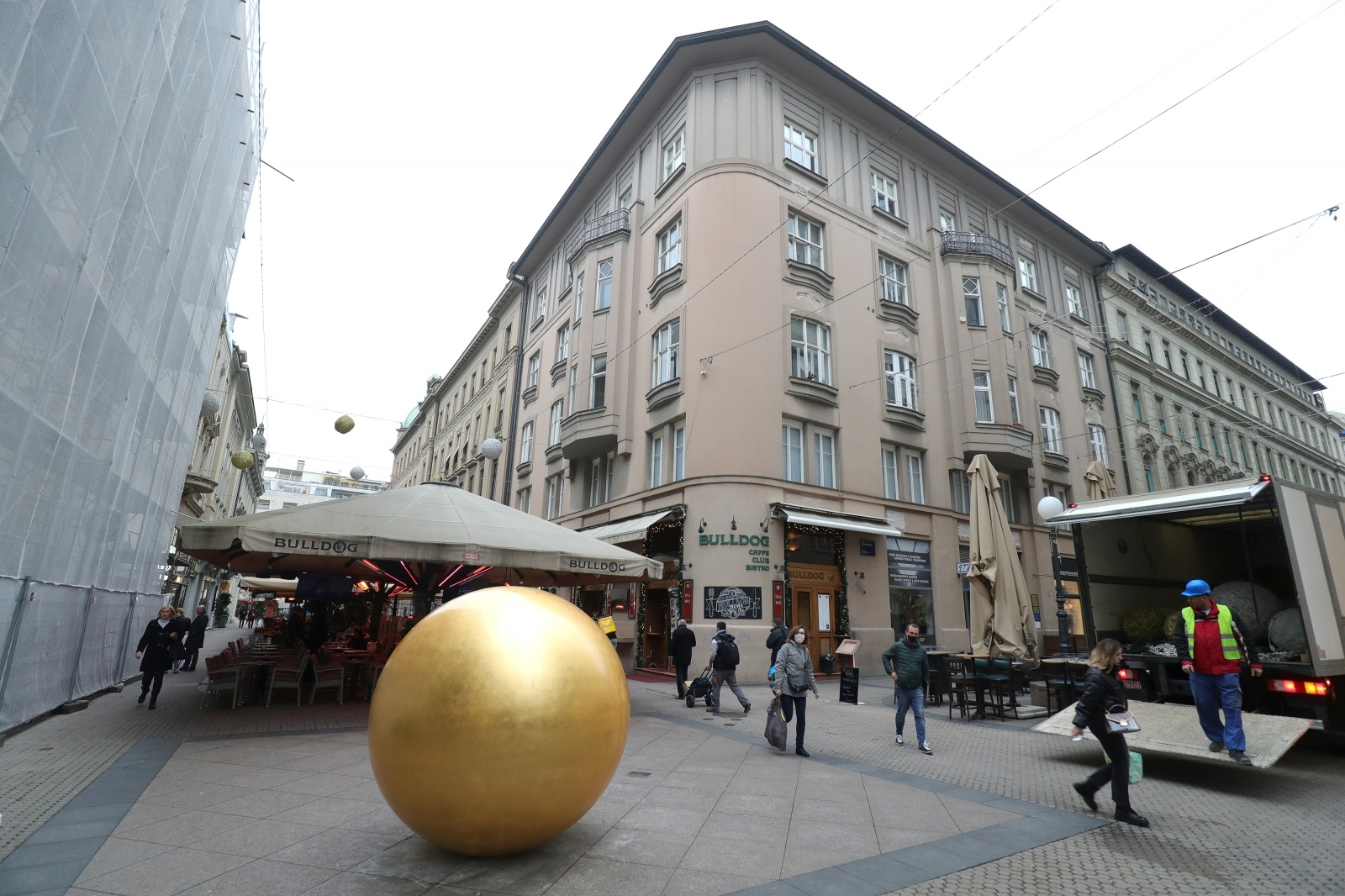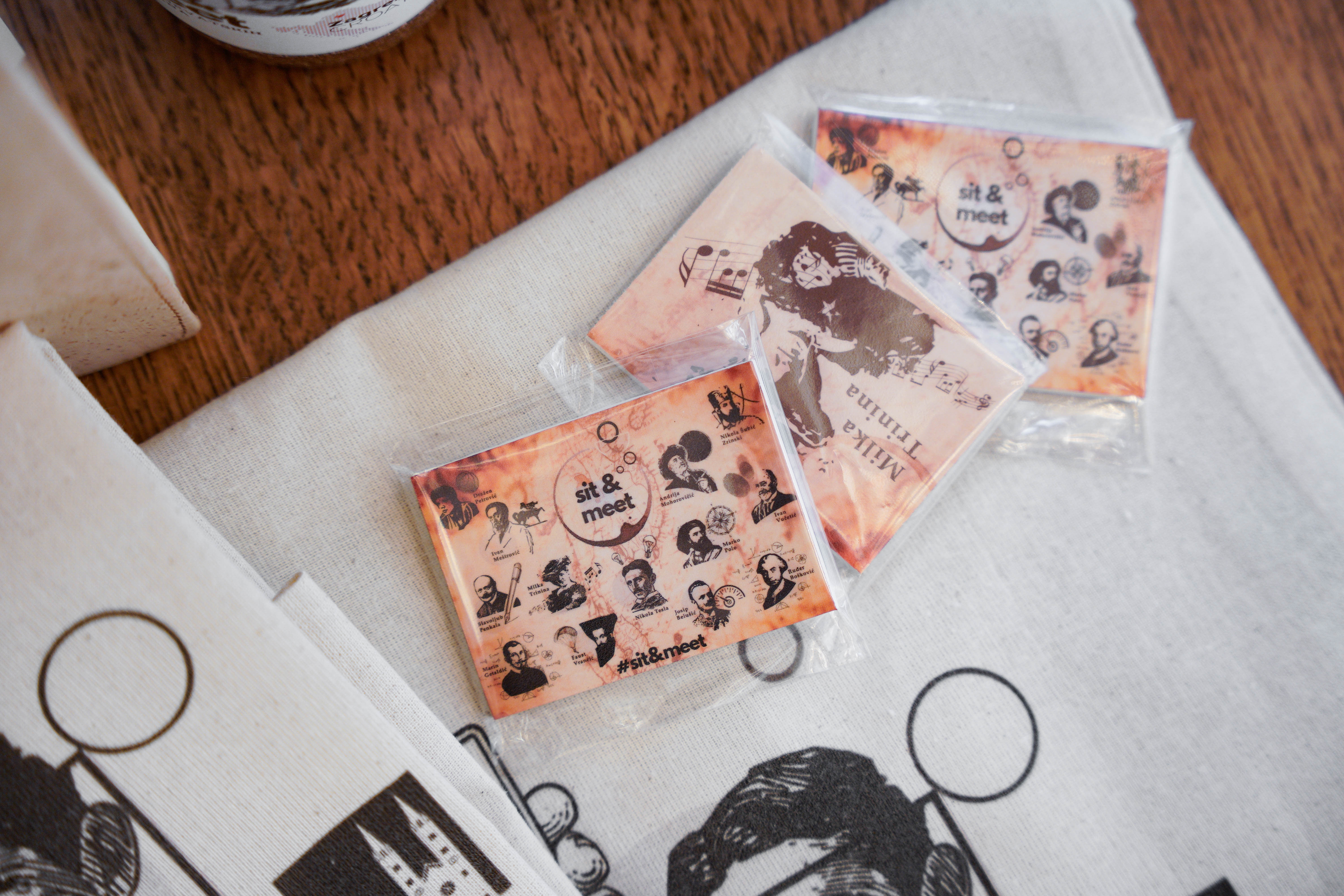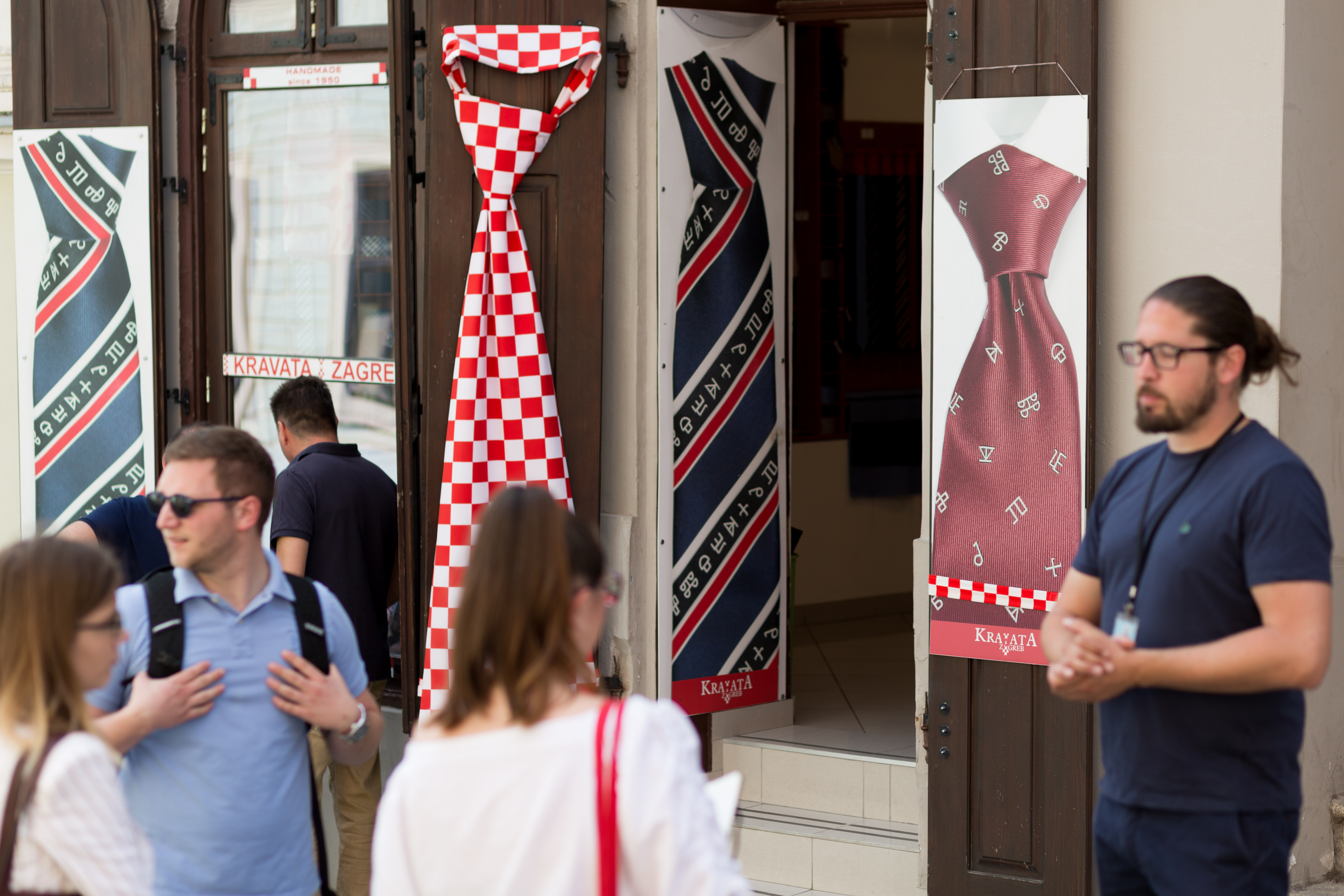

The Solar System, less commonly known as "Nine Views", began with the installation of the Sun in Bogovićeva Street in Zagreb. Artist Ivan Kožarić created and placed this Sun in 1994, and artist Davor Preis decided to create the entire Solar System. This happened in 2004, and the installation was named "Nine Views."
The planets are stainless steel spheres, with their size and distance proportional to the Solar System, considering Kožarić's Sun as a reference point.
If you're curious and have the time, we definitely recommend seeing these installations. If you are still not sure how to best organize your time in Zagreb, take a look at our Sit&Meet tours and enjoy this beautiful city with us.
The installation represents nine planets that are arranged around the city in the exact proportions as the planets are arranged in the solar system.
This artistic installation is located in Bogovićeva Street (central Zagreb), and that's the main reason you're reading this post – if Kožarić hadn't installed the sun, there probably wouldn't be a Solar System in Zagreb. The sun is the star at the center of our Solar System, representing an almost perfect sphere. Its diameter is 1,392,000 kilometers, about 109 times that of Earth, and it weighs a staggering 330,000 times more than Earth. Life on Earth would not exist without the sun, so let's begin with this star.

Mercury is the planet closest to the sun. Not only to the sun that sustains life on Earth, but also to the sculpture of the Sun in Bogovićeva Street. If you start your planetary quest from Bogovićeva, your search for Mercury won't take long. Head west towards Cvjetni trg, then turn right towards Ilica. When you enter Margaretska Street, walk 15-20 meters, and on the wall to your right, Mercury will appear (Margaretska 3). The temperature on Mercury ranges from extreme -180 degrees to even more extreme +430 degrees. It is the second smallest planet in the Solar System. A day on Mercury lasts over 58 Earth days, and its year is only 88 days. Mercury is named after the Roman messenger of the gods.
For the second planet on our list, Venus, you'll need to take a stroll of about 6 minutes. After seeing and photographing Mercury, exit onto Ilica and head towards Ban Jelačić Square. After a short walk to the main square in Zagreb, turn left towards Dolac. Once you reach Splavnica (before Dolac), Venus is on the first column (on the left side, a bit higher) before the square. Venus is the second planet from the sun and the second-brightest object in the night sky (after the Moon). The planet is named after the Roman goddess of love and beauty. Venus is also known as Earth's sister due to similar size and mass. One day on Venus lasts 243 Earth days, and it orbits the Sun in 225 days. Venus is the hottest planet in our Solar System with an average temperature of 462 degrees.
While researching for this project, we came across an interesting fact about this planet. It read: "If you're looking for Earth, look beneath your feet." Good one, right? To find Earth, you'll have to return to Cvjetni trg. When you come back, head to Varšavska Street 3 (kino Europa), and on the last column (in front of the bank) is the Earth sculpture (facing the street). It is a bit higher like Venus but easily noticeable. There isn't much information about Earth that you don't already know. It takes 365.26 days for Earth to orbit the Sun, and a day lasts 23 hours, 56 minutes, and 4.1 seconds, not exactly 24 hours as we are taught. An interesting fact is that Earth's rotation is gradually slowing, decreasing by 17 milliseconds every 100 years. However, it's happening so slowly that a day will last 25 hours only in 140 million years. Earth is the only planet not named after a god.
.jpg)
Time for the fourth planet – Mars! To get to Mars, you'll need to walk Ilica again, pass Ban Jelačić Square and Venus, and head to Tkalčićeva Street at house number 21 (on the left side). Mars is named after the Roman god of war and is often called the Red Planet. It takes Mars 687 days to orbit the Sun, and a day lasts similar to Earth, 24.6 hours. An interesting fact is that the highest mountain in the Solar System is on Mars, reaching a height of 21 kilometers. Until September 2014, 40 missions were launched to Mars from Earth, but only 18 were successful.
This is the first planet that will require you to drive a car or some other form of transportation as it is a bit further away – on a stone wall at Voćarska 71. It's noticeable and not as high as some planets, making it easy to photograph. Jupiter is the fifth planet from the Sun and the largest in our Solar System. It is two and a half times larger than all the planets combined! Composed mostly of gases, it is often called the "gas giant," with an average surface temperature of -108 degrees Celsius. It takes Jupiter a long 4,332.85 days (11.86 Earth years) to orbit the Sun. Jupiter is considered the fastest-spinning planet on its axis in our Solar System, taking, on average, a short 10 hours for one rotation. Thus, Jupiter has the shortest days of all planets in our Solar System.
.jpg)
Saturn is not far from Jupiter, just a few minutes' drive – in Račićeva Street 1. It is located on a wall fence and is the only planet not on some kind of wall or pillar. It is the farthest planet visible to the naked eye. Saturn is best known for its ring system discovered by Galileo Galilei in 1610. It takes Saturn a long 10,755 days (29.45 Earth years) to orbit the Sun, and one day on Saturn lasts only 10 hours. The average surface temperature is around -139 degrees Celsius. It is named after the Roman god Saturn, consisting mostly of hydrogen. Saturn is orbited by around 150 known moons, with Titan and Rhea being the largest.
We have reached the last three planets of our Solar System. The first of the last trio is Uranus. It is located at Siget 9 (Novi Zagreb) between several garages, making it very easy to find. When talking about the planet, it is the seventh planet from the Sun and the first planet not visible to the naked eye. Here are some numbers describing this planet. It takes Uranus a long 30,687 Earth days (84 years) to orbit the Sun, rotates on its axis in 17 Earth hours, and has an average temperature of a chilly -197 degrees Celsius. Due to its minimum atmospheric temperature of -224 degrees, it is known as the coldest planet in our system. An interesting fact: Uranus is the only planet rotating in the opposite direction to all other planets in the Solar System. Uranus's moons are named after characters invented by William Shakespeare and Alexander Pope, such as Oberon, Titania, and Miranda.
We are quickly approaching the end of our long journey, and it's time to introduce you to Neptune. It is located on a high streetlight in Kozari put 48, making it a bit more challenging to photograph, but we managed! It is the eighth planet from the Sun. Many years ago, in the early history of our Solar System, Neptune was much closer to the Sun, but it began migrating to its current position. It takes Neptune a long 60,190 Earth days (165 years) to orbit the Sun, and it rotates on its axis in 16 hours. The average surface temperature is -201 degrees Celsius. Speaking of ice giants, Neptune is the smallest planet in that group. It is composed mainly of hydrogen and helium with a small percentage of methane. It has around 14 moons in its vicinity. Only one spacecraft has flown close to Neptune, and that was Voyager 2, which managed to capture several photographs of Neptune in 1989.

Some might say that the post about Neptune was the last, and there are no more planets. Regardless, we will write about Pluto, even though it has disappeared from the location in Podsused! We went there to take a few pictures, but the plaque was broken, and Pluto was gone. Perhaps someone's heart was broken because Pluto was removed from the list of planets, so they had to steal it for themselves. We ignored that and continued with what we came for. Pluto is the ninth planet from the Sun and the second-largest dwarf planet. It takes Pluto a long 246 years to orbit the Sun, and one day lasts 153 hours (6.4 Earth days). The average temperature is -229 degrees Celsius. It is named after the Greek god of the underworld. In 2006, Pluto's classification was changed, and it was declared a dwarf planet.
Sit & Meet is a project in Zagreb that includes unique walking tours where you can meet Croatian innovators and geniuses for a coffee along with seeing all the famous city sights.